😦 wasps, your new favorite party topic. 💬
how to attract the most beneficial insect to your garden

I certainly grew up afraid of wasps. My little brother was stung by yellow jackets once, and it was a Very. Bad. Time. When he was 4 years old, he pushed a baby stroller through a wooded area in the front yard, got stuck on a stick, and picked it up to move it out of the way. There was an underground nest beneath it and a swarm erupted, stinging him more than 27 times. I will never forget his tiny body being set in the sink with my mom ripping his clothes off, yelling and trying to get them out from under his shirt.
While I’ve just successfully made the case against wasps — now I would like to make the case for wasps. I know, stick with me. 🙏🏻
While I have 1 strong memory of yellow jackets, I have thousands upon thousands of non-memories from peaceful, helpful wasps in nearly every outdoor environment over the course of my life. I have no memory of all the other wasps that don’t sting and don’t swarm. I have no memory of the paper wasps, mud daubers, great black wasps, or common thread-waisted wasps.
Bees have become “all the rage” lately (and rightfully so), but wasps are getting left behind in the conversation, and they play an extraordinarily important role for us: Keeping our problem bugs in check, and eliminating the need for use of pesticides.
Put simply: Bees are vegetarian and wasps are (mostly) carnivorous.
Wasps are FASCINATING and I am here to make you an expert — and give you a Small Talk Topic for all your upcoming summer parties and events. 🥳🎪🌷👗🍾🎪
No one is surprised by now to hear me say, “there are hundreds of thousands of kinds!!” about anything, and wasps are no different. There are over 100,000 recorded types of wasps and we think we have only identified 1/5 of them. The nuance with which they have evolved is mindblowing. For example, there is a unique wasp for every single one of the 1000+ fig varieties; each wasp has its own fig that he (or she) alone is responsible for pollinating.
A few more facts:
Female wasps have both eggs and sperm in their bodies. If they want to lay a female egg, they fertilize it. If they want to lay a male egg, they just don’t fertilize it. They control the sex of their offspring every single time, and with purpose.
They recognize and remember one another with exact accuracy from their unique, individual facial markings.
They fly “orientation” routes every time they make a new nest, specifically flying in arches or figure 8 patterns to memorize where their new home is so they can return.
Their sight is exceptional for an insect; they have 2 compound eyes that give them spacial orientation and also 3 simple eyes that let them see close up prey and plant detail.
Wasps can recognize human faces (!!!!!!!) - which is why they are often very comfortable around familiar, “safe” people.
SOLITARY VS SOCIAL
When we think of wasps, we think of social wasps: The paper wasps or yellow jackets that live communally, creating a large nest to house their young. But this is very unusual behavior for most wasps. The vast majority are actually solitary. Most of the wasps in your garden will never associate with other wasps. They fly around alone, and either lay eggs in their own little nest or inside of another insect.
Social wasps are the ones most known for stinging — they have more need to be able to protect their young, and are more sensitive to stress. Solitary wasps rarely sting, even if threatened or disturbed.
PARASITE VS PARASITOID
Perhaps it is the social wasps that stand out for us because we can visually see their papery nests or mud dauber tubes — but nests are ANOTHER unusual feature of wasps. The vast majority lay their eggs inside of or on top of other insects! These are called parasitoid wasps.
[Parasites are anything that survive off of another living thing, but do not kill the host. Parasitoids live off its host, eventually killing it. Wasps are parasitoids. #nowyouknow]
Solitary, parasitoid wasps will lay their egg inside of a caterpillar, aphid, whitefly larvae, or other insect. Once the eggs hatch, the wasp offspring slowly feeds off its host until it finally matures, killing the host. 🏴☠️
While absolutely disgusting, this behavior keeps so many common pest infestations in your garden at bay.
WHAT THEY EAT & WHY THEY STING
While adult wasps do consume nectar, they spend most of their time hunting for bugs to take back to their young. They will carry off so many smaller pests in your yard — I have watched them swoop in, grab cabbage worms, and fly away.
Their stinger has two purposes: First, to paralyze their prey so that it’s easier to fly through the air and take back to their offspring. Second, to paralyze host insects so that they’re still while they inject their eggs into them. 🤢
A female wasp’s venom is prized: Her priority is to reproduce and feed her young. Her goal is to keep that venom in tact for the insects she needs to sting. She will avoid stinging anything else and would much rather fly away. ✌🏼 I try to chase down wasps constantly to get a good photo, and they hate it and leave. :(
HOW TO ATTRACT THEM
Insects need what we need: Water, food and housing! To bring more wasps to your property, add these 3 things:
Multiple water sources. Bird baths, large pans of water on the ground, or running water. I have two bird baths in the backyard and I often see wasps, bees, and butterflies drinking from them - not just the birds.
Plant material for housing. Resist the urge to clean up all your dead plant material in the fall. Insects over-winter in the stems and under decaying leaves. Wait as long as you can in the spring to prune dead stems from perennial flowers — a good rule is to wait until you’ve had 3 full consecutive days at 50 degrees at night. This gives winter eggs a chance to hatch before their nest is destroyed.
Food. Since wasps eat both nectar [as adults] and bugs [as young], create a good supply of each.
Flowers: Anything from the Daisy or Parsley family is best at attracting beneficial insects - and of course, natives.
Daisy: sunflowers, coneflower, calendula, marigold, yarrow.
Parsley: carrot, dill, fennel, cilantro, bishop’s flower, queen anne’s lace.
Natives: Hairy Mountain Mint, Joe Pye, Milkweed.
Bugs: If you over-react to small bugs like aphids, whiteflies, caterpillars, etc, wasps will not have anything to feed on. When you see little populations in the early spring, consider leaving them! Aphids very, very rarely kill plants, and if you can coax wasps to join your yard, they will stick around for the full season and keep anything from getting out of control.
WHEN TO KILL THEM
It’s good to know that wasps are most sensitive to intensive vibrations; moreso than from visually seeing a person or child. Stomping on the ground, mowing, or shaking of a tree will get them worked up much more than walking past the nest.
Social nesting wasps are more likely to sting in late summer or fall, after they are done breeding for the year, and are spending more time outside the nest looking for sugary nectar for themselves.
If you have a nest above your door or on your porch, no one will be upset with you for removing it. Especially if you catch it VERY early, the community will just rebuild somewhere else and no harm is done. 👍🏼
If you are on the fence about it’s location, consider leaving the nest thru spring and mid summer - and then getting rid of it later in the year, especially if you have kids or it’s within a few feet of where you spend a lot of outdoor time.
I am particularly sensitive to yellow jackets, and since they make their nests above and below ground, consider destroying an in-ground nest on your property if you think you or your children will step on it.
COMMON WASPS TO KNOW
THERE ARE SO MANY but an easy way to start learning is looking up common wasps in your state. Here are a few that are likely (hopefully!) in most of our gardens and are worth being familiar with.

A NOTE ON PEST MANAGEMENT
One reason to hold off on using pesticides is due to how they work in conjunction with bug populations.
Speaking generally, the tiny bugs are those that feed on your plant, causing it harm + transferring viruses. The smaller the bug, the faster it reproduces.
When you use a pesticide to wipe out an infestation, it will kill any beneficial bugs in the area too. Larger bugs take a longer time to reproduce, so you often create a worse issue than you initially had: Fast reproducing “bad” bugs and no one to help you kill them.
Also, be mindful of the bugs that you pick off or kill — the larger ones typically are the beneficial bugs!
PERSONAL UPDATES
In this week’s episode of “food is beautiful,” I started learning how to make kimchi and sauerkraut. Thank you to my friend Logan for lending me this book; I highly recommend.
THE TREES, THE TREES
The neighbor’s pine tree finally fell and crushed our fences, but at least I got some free woodchips out of it. 🤷🏻♀️ It missed my line of tomatoes by about a foot, so no tragedies here this week!
PLANT STARTS FOR SALE
I still have a few seedlings left for sale; reply to this email if you’re interested in purchasing! $3 for little pots, $5 for big ones. Pick up in Ardmore, cash, venmo or cashapp.
Brandywine Tomato
Sunrise Bumblebee Tomato
Black Beauty Tomato
Feverfew
Borage
Big Leaf Tong Ho
Cucamelon
Chocolate Dara
Alabama Black Eyed Butter Beans
We’ve been having a great time on Thursdays and if you’re wanting to meet some new garden friends, be part of a local food growing community, or get some support with your garden this year, become a paid subscriber! This gives you access to a Zoom hangout on Thursdays at 12pm EST and 6pm EST where a few of us get together and discuss whatever’s goin’ on!
Until next Friday,
Lauren 🍅🥬👩🏻🌾
forgive the depth of your longing. you are the love made to fill it. alice frank.

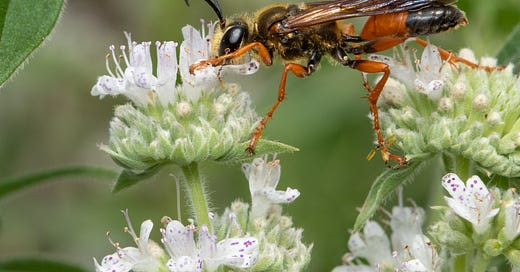


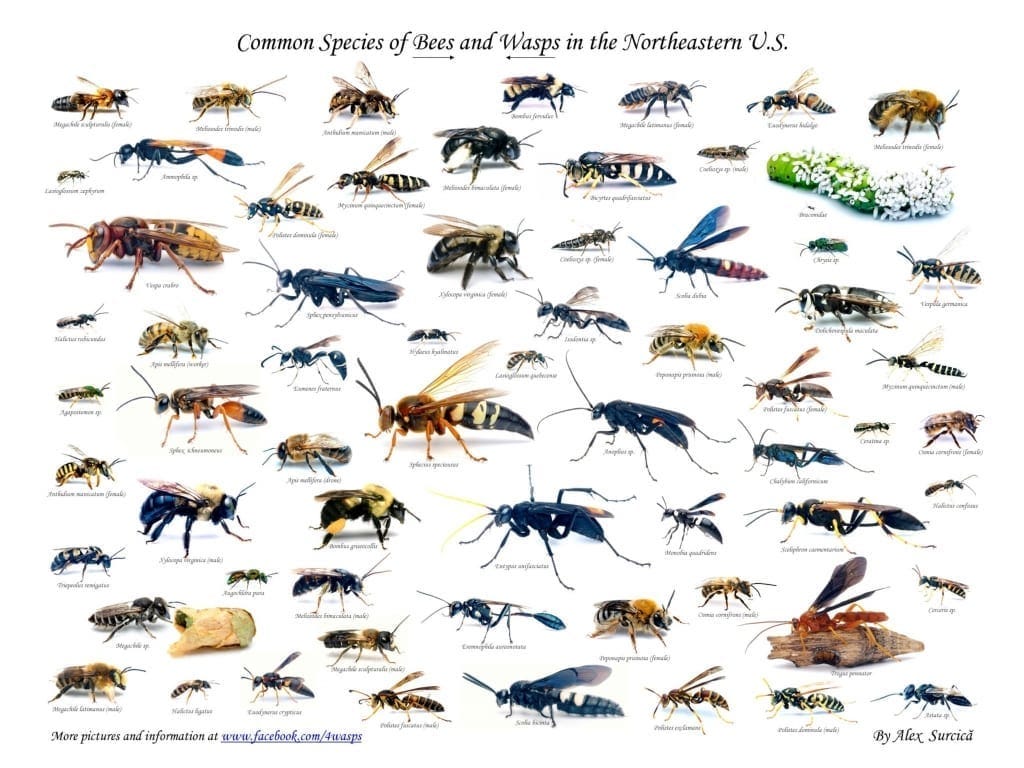


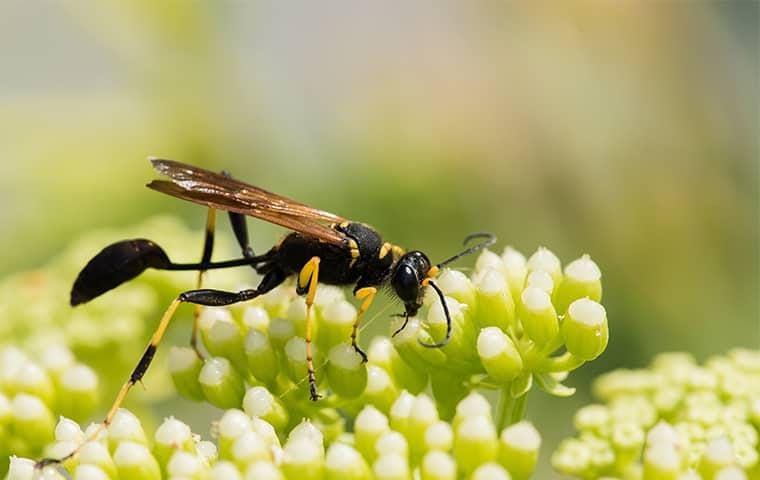


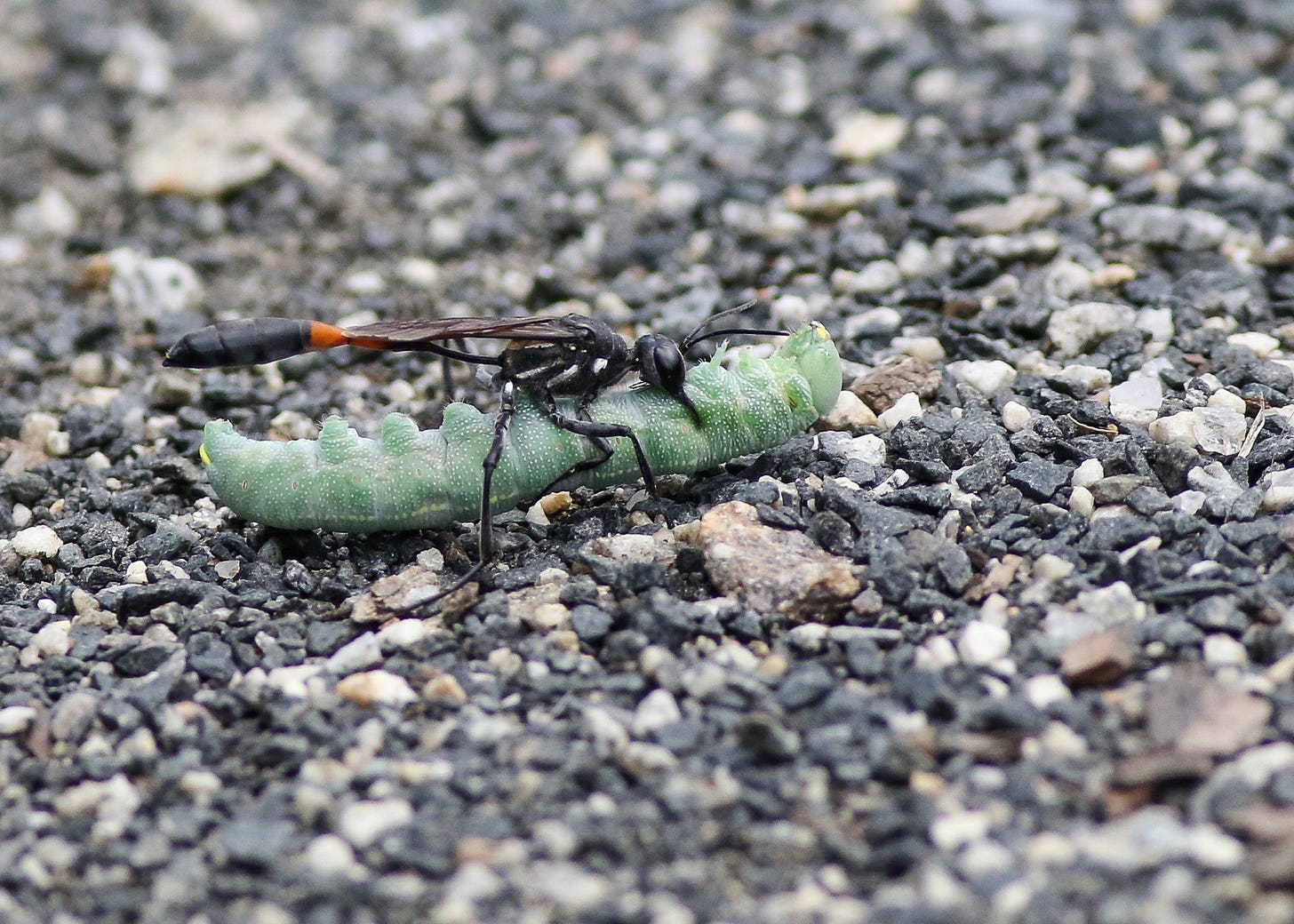
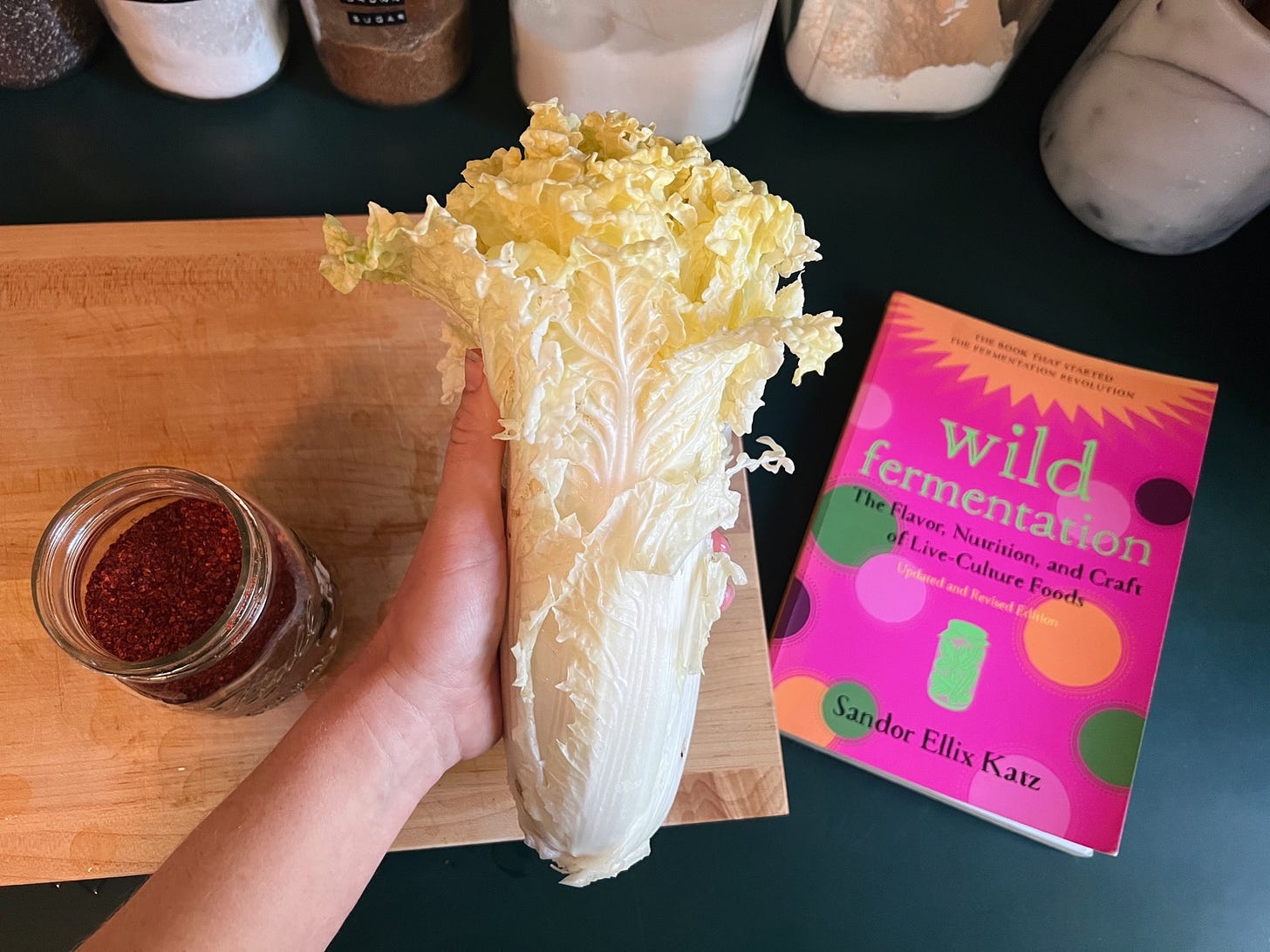
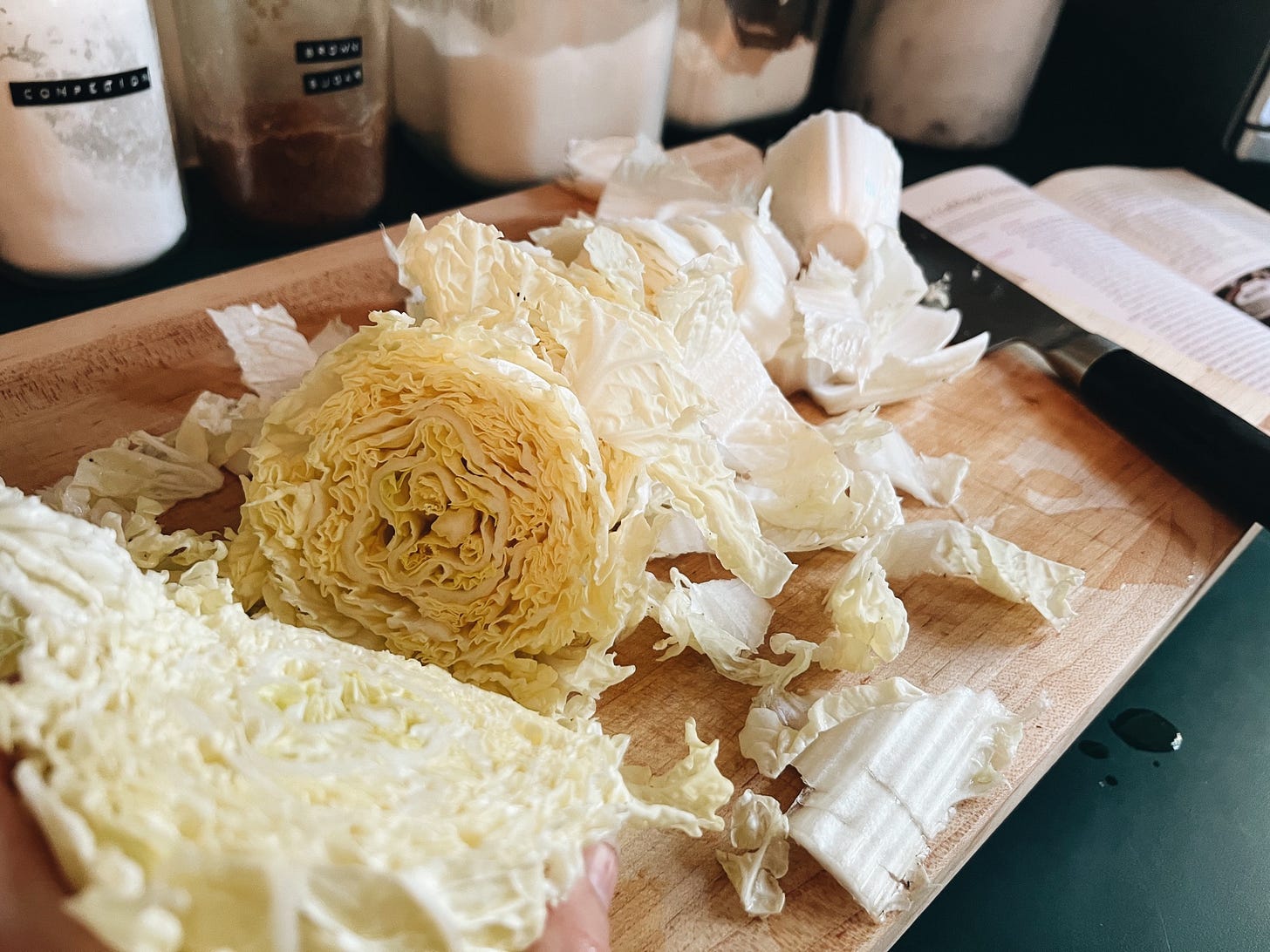
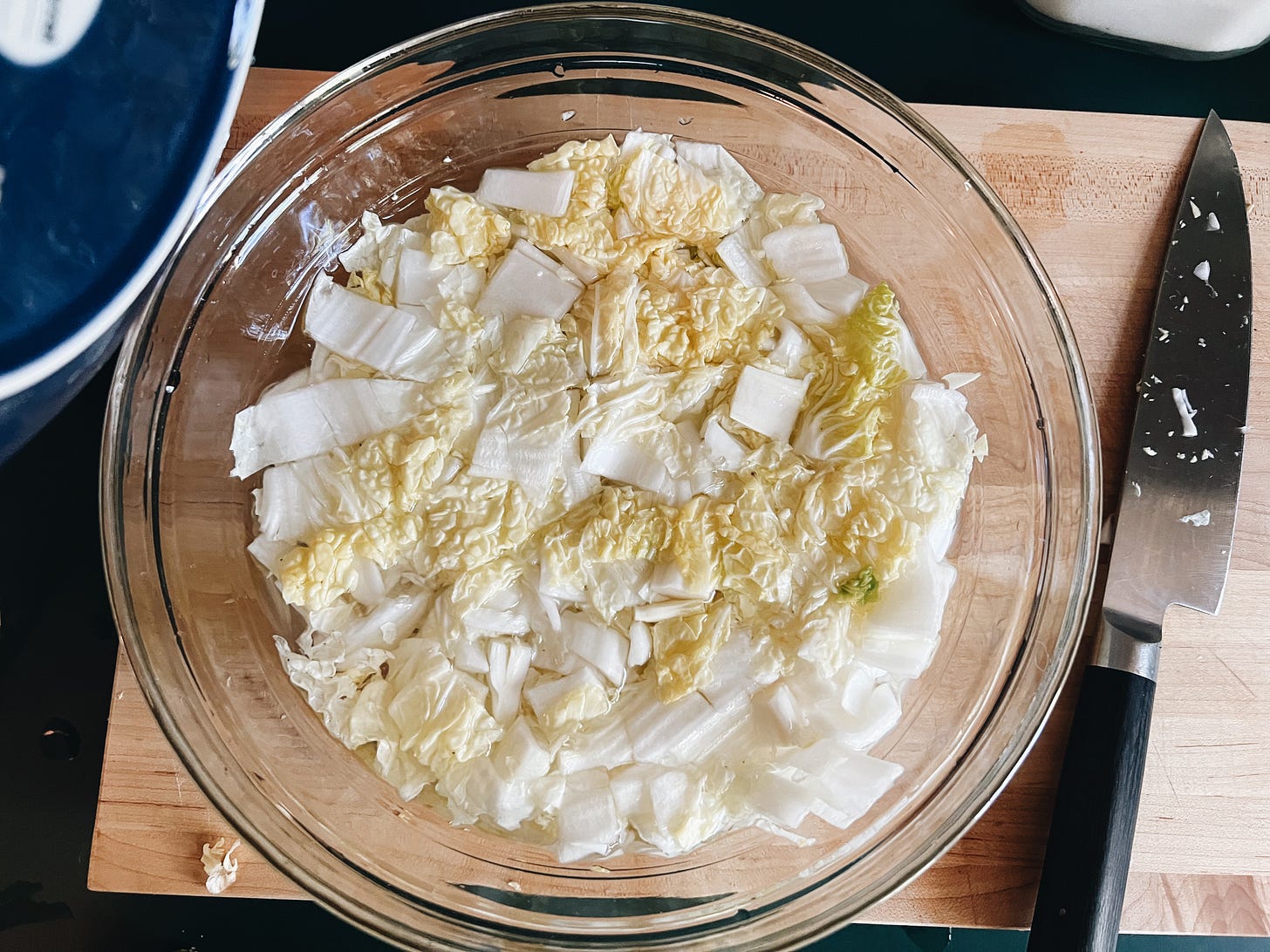

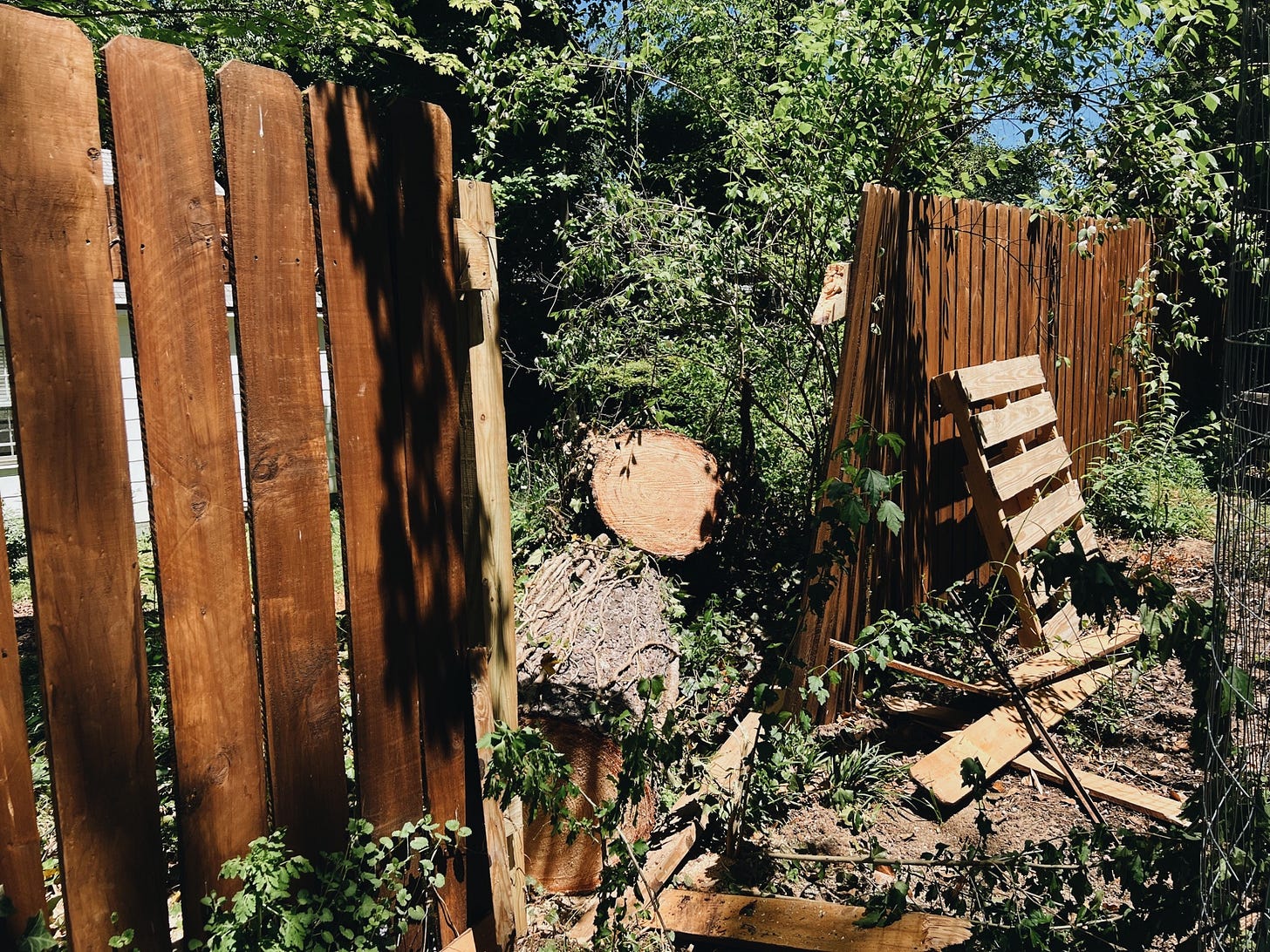
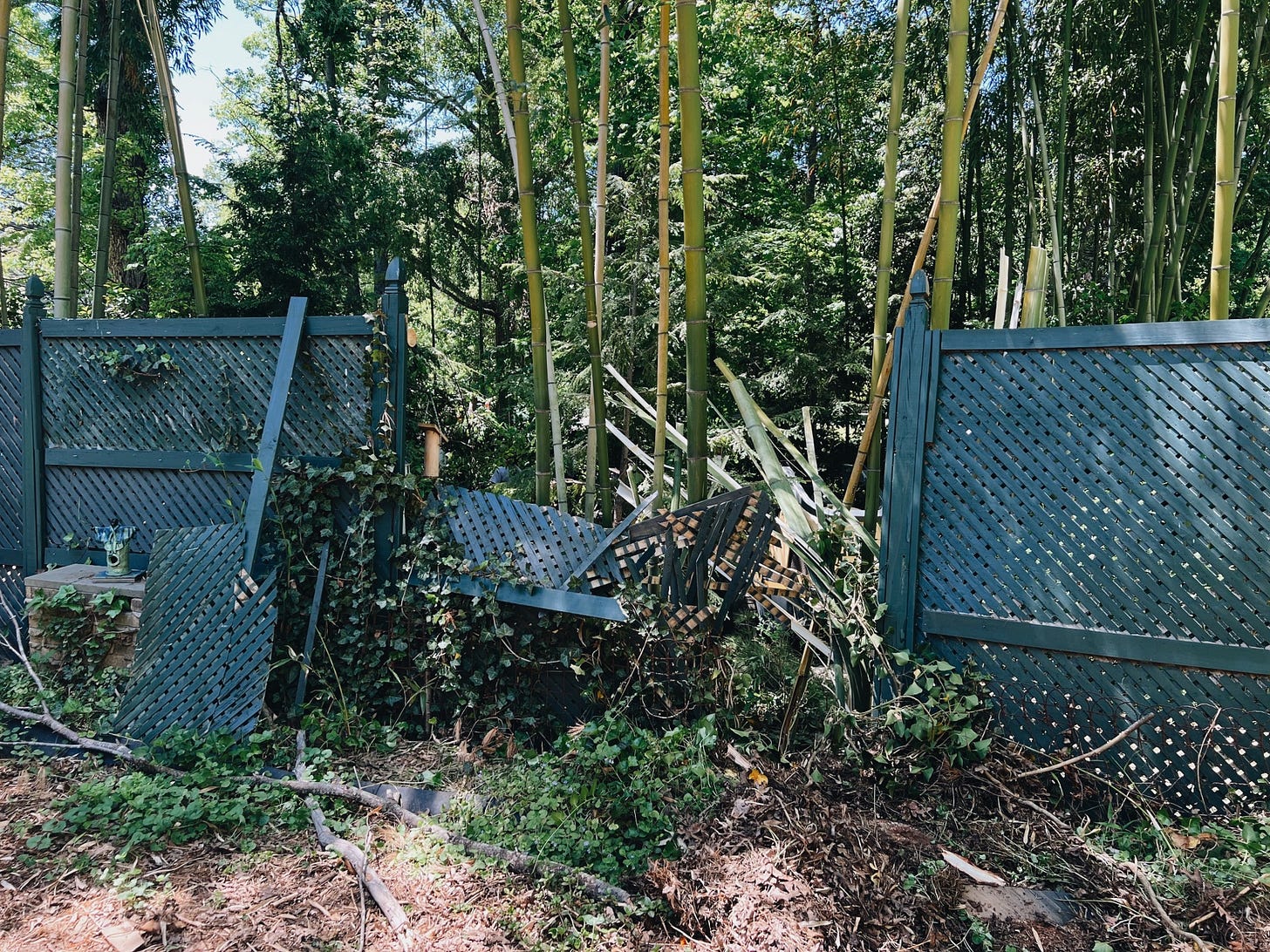

Thanks for sharing, this is very interesting. I love bees and appreciate them. I recently found out about Mosquito Dunks, that are safe for the other insects and the environment. I would encourage more people to use them instead of spraying harmful insecticides. You just make a bucket or container with water, fill with some yard debris and put a dunk in. The mosquito lays eggs and they die.
You're such a great teacher! Wonderfully researched and summarized. Will be less fearful/more encouraging of wasps henceforth! (I got stung by a yellow jacket late last summer on my ankle when I was pregnant and could not walk for a week, and so I'm harboring some ill will, but it's great to know the context!)